Dermatologists and mycologists try to take an informal approach to the treatment of the fungus, which consists of the usual prescription of ointments and tablets, leading to a chronic course of fungal infections and the development of serious complications that reduce the quality of life:
- Fungal eczema.
- Permanent hair loss.
- Destruction of nail plates and scarring of the nail bed.
- Chronic inflammation of the penis socket and vagina that constantly disturbs men and women and makes sex life impossible.
A method of getting rid of a fungal disease that will help you achieve the following goals:
- Destruction of the pathogenic fungus in the focus of skin lesions.
- Protecting healthy skin (nails, mucous membranes) against the spread of mycosis.
- Relapse prevention.
- Restore the normal structure of the skin, hair and mucous membranes while maintaining their elasticity and beauty.
- Removal of fungal waste products from the body that cause chronic poisoning and allergies.
- Restoring the sensitivity of the skin and genital mucosa to normalize sex life.
It all seems logical, and as it should be. But in practice, very rarely do dermatologists follow all the rules for treating fungal diseases, often limiting themselves to external therapy. Yes, and many patients just want to "smear something" instead of undergoing full treatment.
What diseases are treated at the clinic:
- Onychomycosis is a fungal infection of the nails of the hands and feet.
- Fungal lesions of the skin of the feet and hands.
- Smooth skin mushrooms.
- Fungal diseases of the gluteal folds of the groin, axilla, subvertebral gland.
- Pityriasis versicolor.
- Scalp fungus, dandruff.
- The fungus that causes seborrheic dermatitis.
- Candidiasis, thrush of the penis and vagina.
- Fungal inflammation of the prostate.
- Candidiasis of the oral mucosa and tongue.
- Fungal diseases of the outer ear.
The treatment of the fungus, of course, depends on the type and localization of the process. Let's look at the general stages of therapy:
- Mandatory analysis of the scrapings of the fungus, determining if possible its type, susceptibility and quantity.
- Blood tests, biochemical and immune system status.
- Hair, laser or surgical removal of the affected area of the nail plate.
- Drug therapy: Antifungal drug intravenously or in tablet form. It lasts from 10 days to 4 months (for onychomycosis). Injection of antimycotics has proven to be the best and allows to reduce the duration of treatment of fungal disease and the effect on the liver. External treatment with antifungal ointments, creams and solutions in the order specified. Preparations that improve the growth of nail plates, hair, restore the epidermis of the skin and mucous membranes. Topical treatment in the form of baths in the penis and vagina to restore the normal microflora of the genitals with fungal disease of the genitals. Immunotherapy, removal of fungal toxins and allergens.
- Physiotherapy: ultraviolet radiation with medical quartz, treatment of the affected areas with an infrared or ultrasound laser.
- And in the end - checking the fungi.
Treating fungal diseases can seem too time consuming and complicated. That's right, but only to a doctor! Treatment regimens are designed so that the patient does not notice much discomfort during therapy and everything goes easy for him.
The treatment of skin fungus usually does not take time and takes about 10-20 days. Hair and nail treatment takes longer and takes several months.
But it is not even about the duration of therapy. The treatment of fungal diseases should be performed by a specialist, dermatovenereologist, mycologist who is familiar with all the methods listed above and actively applies them in practice. Professionals working in this field are admitted to the clinics on a daily basis.
Foot fungus treatment
Foot fungus has been used in combination with other fungal diseases for over 13 years.
The fungal treatment of the foot skin developed and used in the clinic has long proven its effectiveness, despite the well-known difficulties in the treatment of fungal diseases.
What do patients who have completed a course in diagnosing foot mycosis get:
- Complete destruction of the pathogenic fungus on the sole, in the interdigital spaces, in the back of the foot, in the thickness of the nail plates.
- Elimination of itching and unpleasant odor from the foot.
- Healing of cracks and inflammatory lesions in the skin of the foot.
- Restoring the elasticity of the skin, eliminating hyperkeratosis - thickening of the skin of the sole, especially in the heel area.
- Elimination of excessive sweating - hyperhidrosis of the foot.
- Growth of healthy nails.
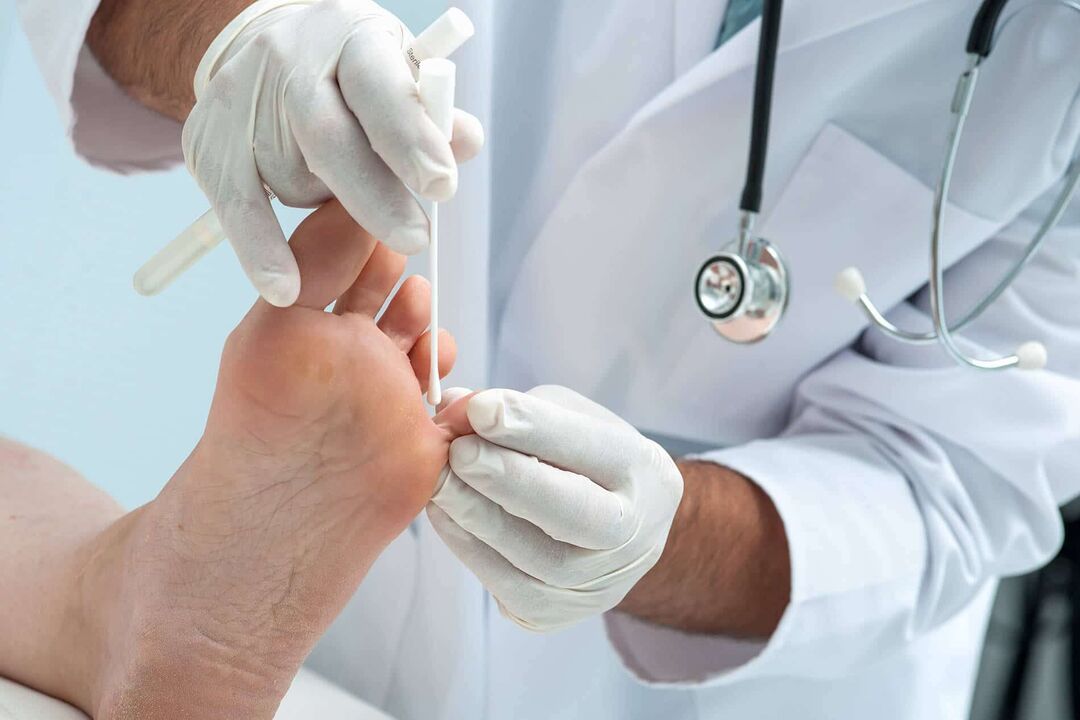
That is, if on the first order, the dermatovenereologist, mycologist, and the patient himself see a thickened foot, cracks, an epidermis between the toes, stagnant redness of the skin of the foot, constantly wet shoes, and socks, a twisting image. , darkened nails, and after a complete fungal therapy on the feet, there is a pleasant feeling in this part of the body, the skin becomes smooth, the smell disappears, the nails gradually recover.
Steps for treating foot fungus
- The diagnostic phase involves examining the scrapings from the skin and nail plates for a pathogenic fungus, determining the pathogen group that is important for the selection of the antifungal drug. To complete the picture, information is needed on changes in the patient's metabolism, which may be the cause of excessive sweating of the skin of the foot and a decrease in local resistance to fungal infections. Here's a blood test.
- The treatment of foot mycosis itself takes place in several stages, depending on the initial clinical picture and the type of fungus. Removal of affected areas of keratinized thick skin and nail plates. This is accomplished by special ointments, procedures, or hardware and laser removal of abnormal areas. The duration of the phase is 1-7 days. Once the skin is clear, it is possible to use an external antifungal therapy that delivers the medicine directly to the skin of the foot.
- Systemic antimycotics, ie antifungal agents administered by injection or in tablets. Of course, intravenous dripping of such drugs has been shown to be more effective. Moreover, it has been shown to be safer for the liver and has reduced the duration of treatment, which is 7 to 14 days for skin lesions and up to 4 months in combination with nail injuries.
- Physiotherapeutic treatment of foot fungus includes medical ultraviolet radiation, which has a detrimental effect on the foot fungus, as well as infrared laser therapy, which further improves the blood supply to the affected areas, accelerates skin recovery and nail growth. The duration of the procedure is 3-10 minutes.
- If, as a result of the diagnosis, problems of internal organs, lack of microelements and other substances necessary for the application of antifungal agents to the skin, regeneration of the skin and activation of the fight against the pathogenic fungus are detected. , additional medications are prescribed to correct these changes: immunomodulators, ozone therapy, vitamins, hepatoprotectors, iron, calcium and vitamin complexes with trace elements.
- Excessive sweating and odor often disappear with this foot fungus treatment. But sometimes medications that block the sweat glands of the skin of the foot, laser therapy, and cryomassage with liquid nitrogen need to be prescribed.
- After treatment, the fungus should be checked to see if it has died. Scraping the mushrooms is repeatedly analyzed. But usually the result is close to 100%.
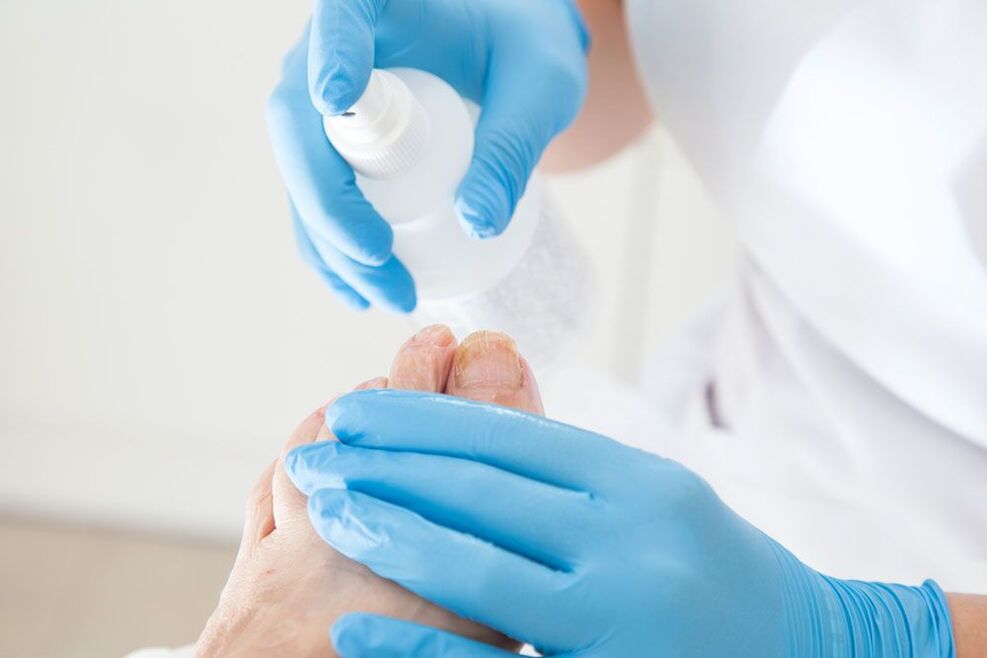
A very important step in the treatment of foot fungus is the designation of post-relapse prevention, which includes the treatment of skin care products and shoes on which spores of the fungus may remain.
The treatment of foot fungus is very varied. It is impossible to describe all therapeutic options in one article. The dermatovenereologists at the clinic will be able to determine the most appropriate technique for your leg fungus after examination and based on the results of laboratory diagnostics, and will provide a complete treatment.
Nail fungus treatment
The treatment of nail fungus is one of the main areas of clinical work in specialized centers, for the development of which specialists approach in detail the individual stages of onychomycosis therapy.
It has long been known that the treatment of fungal diseases is a serious problem, even more serious than the treatment of bacterial infections. The uncontrolled use of various antifungal ointments, tablets, solutions, varnishes has led to the proliferation of a huge number of drug-resistant fungi. And the number of these drugs is very limited, unlike antibiotics. Therefore, in order to achieve the maximum effect of treating patients, we had to take a scientific and practical approach to the treatment of nail and nail fungi and not limit ourselves to the formal prescribing of external therapy for onychomycosis.
What results will you see after a full course:
- Restoring the color and texture of the nail plate.
- Normalization of nail growth and shape.
- Disappearance of laboratory confirmed fungi.
- The unpleasant smell and excessive sweating of the feet disappear.
- The inflammatory process of the skin around the skin, the interdigital spaces and the skin of the sole or palm is eliminated. That is, the redness, itching, peeling, crying caused by the fungal disease disappears.
The treatment of nail fungus lasts 2-3 months on the hands and 3-4 months on the feet. But, of course, it depends on each individual and the type of pathogenic fungus, the rate of nail growth of that person, and the presence of simultaneous pathology of internal organs and blood vessels. For example, in diseases of the veins or arteries of the lower extremities, when the supply of drugs and nutrients to the nail is interrupted, the treatment time is much longer and the result is very difficult to achieve.
Healing is checked after 6 months in the case of fungal nail fungus and after 1 year with toenail mycosis.
The clinic employs dermatovenerologists who are trained in all methods of nail removal and professionally select the optimal treatment for each patient who has been diagnosed with nail fungus on the hands and feet.
How to treat nail fungus at the clinic
Nail mycosis is a chronic disease, so treatment consists of several stages and is always preceded by a detailed diagnosis that reveals the type of fungus and the possibility of complex treatment, which unfortunately cannot be prescribed to everyone.
Nail fungus treatment steps:
- Mycologist's date.
- Diagnostics.
- Direct treatment.
At the first appointment, the doctor will assess the damage to the nail plates and surrounding skin if it is also involved in the pathological process, which is common. It examines other areas of the skin, mucous membranes, hair, because there are cases where the patient is referred to as a fungus, and in the end the diagnosis sounds like onychodystrophy, meaning the symptoms are similar to the disease but not. infectious agent. They are associated with metabolic disorders, hormonal levels, chronic skin conditions, and damage to the nail matrix and nail bed.
Diagnostic measures are then planned, and the nail plate particles and blood are examined.
Diagnosis of onychomycosis of the fingers and toes
| No. | Analysis | Target | Duration of implementation |
|---|---|---|---|
| one. | Scraping mushrooms on nail plates and nail beds | Determining the type of fungus to select the most effective drug | 1-3 days |
| 2. | Sowing mushrooms | Determination of fungal type and susceptibility to antifungal drugs | 7-10 days |
| 3. | Candida PCR diagnostics | Identification of mycosis caused by yeast-like fungi | 1-2 days |
| 4. | Blood chemistry | Determining the status of liver and kidney function when planning systemic antimycotic therapy. Metabolic disorders that have led to changes in the nails can also be detected. | One day |
| 5. | Hospital complex (syphilis, HIV, hepatitis, coagulogram) | If you plan to remove the nail plates or the affected part of the nail | One day |
Here is a complete list of the main diagnostic procedures, but not all individuals are assigned these tests by a mycologist. In superficial forms, such as when there is no need to remove the plates and prescribe antifungal drugs orally or dropwise, no blood test is required.
Crops are also quite infrequent due to their low sensitivity.
Therefore, anyone who treats nail or nail fungus should always consult a dermatologist or mycologist first, and then start performing tests, smearing ointments, drinking tablets, and not the other way around.
It is also very important to take an appropriate sample of the affected areas to identify the fungus. The detection of this in a given patient is 90% dependent on this. Not only are the hard parts of the nail plate taken for research, but also the loose mass from the nail bed that contains the maximum amount of the pathogen.
But even with this approach, the laboratory does not always determine the presence of a fungal infection immediately.
If there are obvious signs of onychomycosis, the analysis is repeated three times with negative results.
So the diagnosis was made, the fungus was detected, its type was identified, the condition of the internal organs was examined, and therapy was started.
Treatment of nail fungus by a mycologist
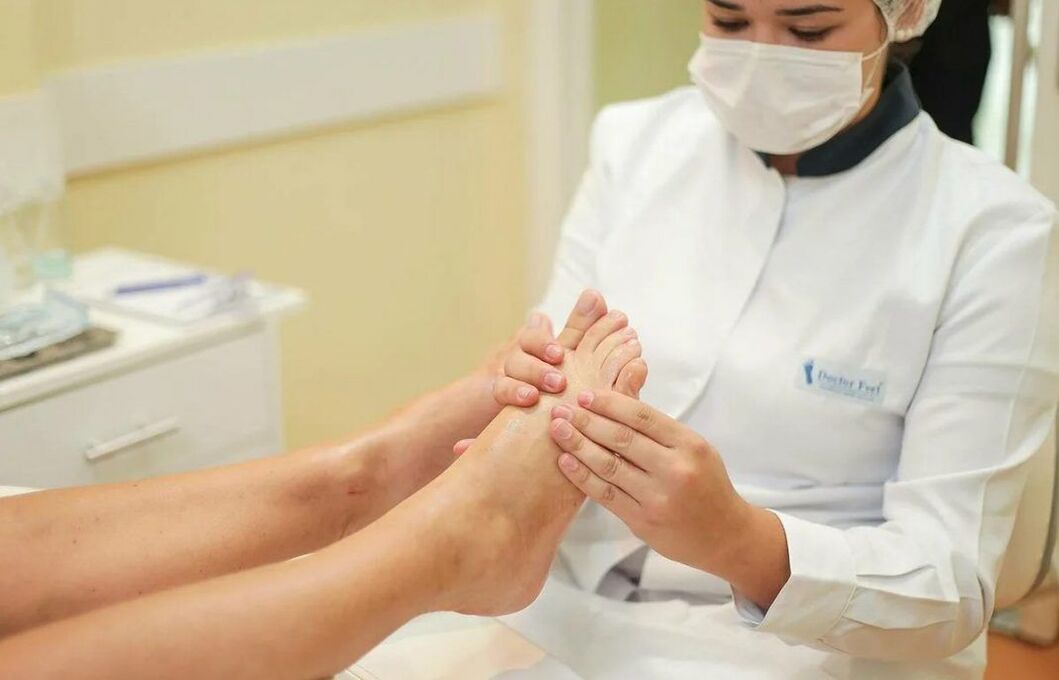
Here it all depends on the clinical situation. Superficial forms of mycosis can be cured by laser treatment of external agents such as varnishes, solutions containing drugs harmful to fungi, and plates. If the nail is completely damaged, it is necessary to remove the affected areas and administer the drugs orally or intravenously.
The treatment stages of the advanced form of the nail fungus are taken into account, as this is the most difficult stage of the nail fungus treatment.
Removal of part of the nail or nail plate affected by the fungus.
As a result, we immediately rid the body of the massive accumulation of the fungus and make the nail bed accessible for access to medicinal substances to kill any microbes left in it. It also reduces the absorption of fungal waste products into the blood, reducing allergic and toxic effects on humans.
There are several methods to remove plates affected by mycosis. The choice depends on the clinical situation and which doctor treats the nail fungus in this patient, what technique is most professional:
| No. | Methodology | How does it happen | Advantages | Price |
|---|---|---|---|---|
| one. | Hardware nail removal | Most used. The affected part of the nail plate is sawn with a special cutter for the nail bed and the back nail ridge. | Safety Minimal inconvenience The patient does not lose his ability to work |
1000-1500 rubles |
| 2. | Surgical removal | After driving anesthesia of the finger, the nail plate is completely or partially removed, if necessary. Antibacterial dressings are used. | Removal of the "cleanest" affected nail, when the fungus is removed, including from under the nail ridges, the nail bed is cleansed of the fungal layers. It is possible to have plastic surgery on a bent nail bed. | From 2500 rubles. |
| 3. | Laser nail removal | Anesthesia of the treated finger is also performed. The laser beam burns the area of the nail affected by the fungus by trapping the nail bed | Maximum removal of fungal masses, but without penetration under the rear cylinder | From 3000 rubles. |
The hardware technique is used more often because it provides a minimal number of complications, does not damage the growth zone and the nail bed, is affordable, but requires more frequent cleaning of the nail beds as it does not ensure complete nail hygiene. finger from the mushroom.
After surgery or laser removal, of course, the amount of fungus left is minimal, but the length of the healing period, possible disability, and bandages limit the use of these methods in some patients.
Destruction of the fungus by external means.
Antifungal solutions are applied to the cleaned nail bed as a result of removing the nail plate for several months until normal nails grow and the fungus test is negative. It is also possible to add antifungal varnishes to the growing edge of the nail plate.
Oral and intravenous administration of systemic antifungal agents. This is the main stage of treatment after nail removal.
It must be ensured that the drugs are delivered to the nail matrix, from where new nails grow, and to the nail bed with blood flow.
Based on the tests, the doctor will select the right medicine for the patient and the method of administration.
The type of fungus, the condition of the liver and kidneys, and the comfort of the patient are taken into account.
In the case of the liver, intravenous administration of drugs that enter the blood and nails and bypass the intestines and liver is the safest route.
The treatment is carried out for up to 3-4 months with lesions on the feet and for 2-3 months if the fungus is on the hands.
There are several treatment regimens for the treatment of nail fungus, which include daily medication and periodic course work.
Liver and kidney indicators are tested at least once a month. If it deviates from the norm, treatment is stopped.
- Physiotherapy in the treatment of nail fungus - helps to destroy the infection and improve the access of drugs, to accelerate the growth of the nail plate. UV radiation from the nail bed has a detrimental effect on the fungus. 10-15 times for 3-5 minutes. Infrared laser - to improve blood flow in the growth zone and the nail bed, which ensures increased delivery of drugs to the affected area and accelerates the growth of a new antimycotic-impregnated plate. Electrophoresis of antifungal agents is to create the highest possible concentration of drugs directly in the focus of the pathological process.
- Regular hardware cleaning of the nail bed from hyperkeratosis layers and fungal residues. For patients with fungal nail disease, it is important to envision the entire treatment process and understand that it is a fairly long-term event, the success of which depends not only on which doctor is treating the nail fungus, but on their own. It is important to take regular medications and use antifungal solutions, handle shoes regularly, adhere to the schedule of physiotherapy procedures, and clean your nail bed.
Which doctor treats nail fungus?
Nail fungus is a serious problem. Everyone who has encountered mycosis defeat of nail plates knows this. It is treated for a long time, it does not always have a good effect, and the use of various ointments, creams and solutions in almost 95% of cases does not bring results at all.
In reality, however, not everything is as sad as knowing which specialist to turn to for nail fungus. And then success is guaranteed even with onychomycosis.
The doctor treating the nail fungus is a mycologist or dermatologist who has experience in treating such patients.
Why is experience important and not just theoretical knowledge? The situation is that the therapy for a fungal infection affecting the nail plates lasts for more than a month. The result is not immediately visible, it can be very difficult to evaluate the effectiveness. It is also not easy to select a full range of procedures and medications for a particular patient that differ from clinically specific to clinical.
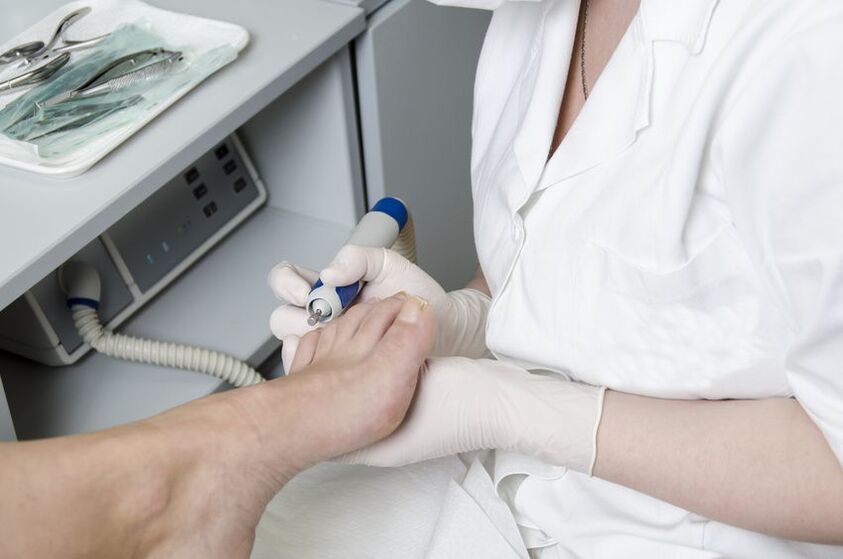
There is a lot of information on the Internet about antifungal drugs, various laser, physiotherapy methods, and nail removal. Self-healing patients start buying one drug after another, and after they get no results, they despair and stop all attempts to get rid of the fungus. The same happens if the treatment is prescribed by a doctor who has no experience in monitoring such patients.
The clinic is visited daily by a doctor who treats the fungus of the legs and arms, and there is also a fully equipped mycology room where all stages of diagnosing and treating onychomycosis are performed.
Which doctor treats nail fungus effectively
- This is necessarily a dermatologist or mycologist.
- He has experience in the examination and treatment of nail fungi.
- You know how to remove the affected nail plates, clean the nail bed.
- He knows the stages of the systemic therapy of onychomycosis, an introduction to the course of physiotherapy methods.
- You can change your treatment tactics over time, or add a procedure or medication with the weak effect of a previously prescribed therapy.
- He is able to use all modern methods and equipment required in the clinic to treat nail fungus.
Treatment of such mycoses is a planned, non-emergency procedure. Therefore, the doctor treating the nail fungus will explain to the patient all the possible therapies after the examination, but the choice is always up to the person.
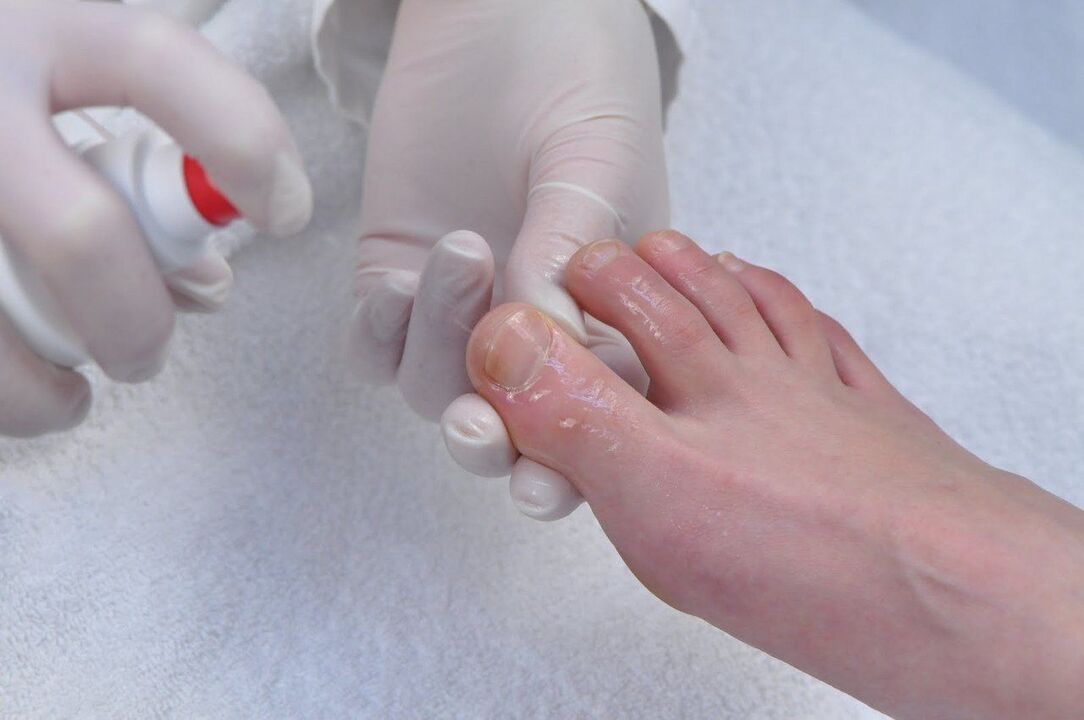
The course, regardless of the technique chosen, is very long and all patients need to understand the effectiveness of each method at the outset:
Treatment of nail fungus with external methods (solutions, varnishes, ointments) - the efficiency helps below 10%, ie only on the initial, superficial forms.
Applying an integrated approach, but without removing the affected areas of the nails, means an efficiency of up to 60%.
Complex treatment with removal of the affected part of the nail plate and physiotherapy - the efficiency is up to 90-95%.
Usually, the doctor treating the nail fungus tells the patient at the first appointment: If the patients are ready for a 3-4 month complex therapeutic course to treat the onychomycosis, they can be successful. If not, you better not even start. They will spend money, time and the result will be in doubt. It is a disease that requires long and pedantic treatment from both the doctor and the patient, where even the smallest details are important.
























